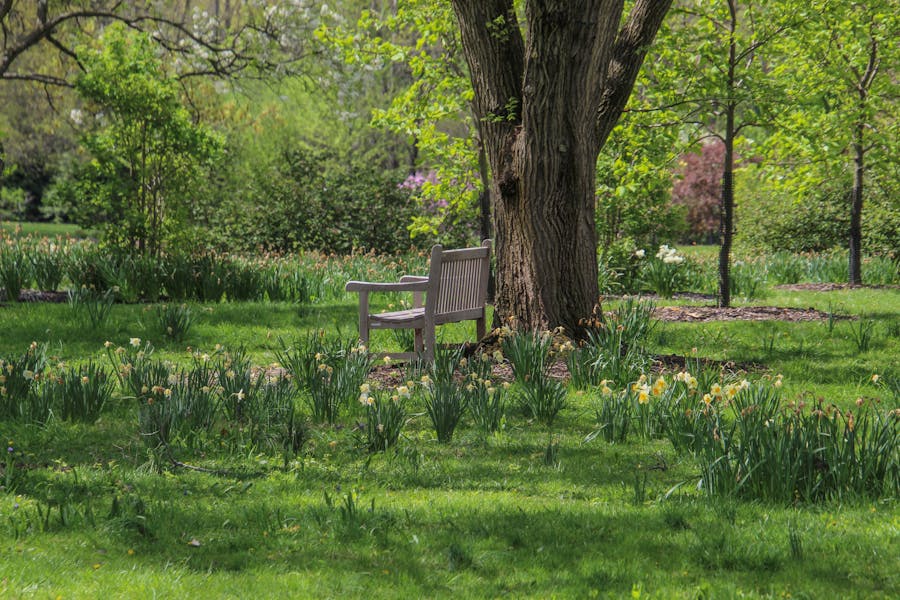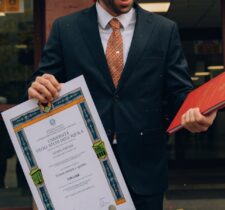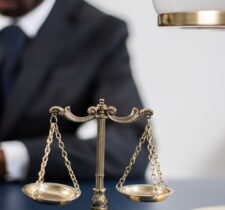If you’ve ever found your yard cluttered with fallen branches from your neighbor’s tree, you may wonder, can I throw neighbors’ tree branches back in their yard? While it might seem like a straightforward solution, the legal and ethical considerations surrounding this question are more complex than they appear.
Laws governing property boundaries, ownership of fallen debris, and how to address these issues vary by state and jurisdiction. Tossing branches back into your neighbor’s yard without understanding the implications can lead to disputes or even legal action. On the other hand, many homeowners may not realize their rights to trim or remove encroaching branches while maintaining a respectful relationship with their neighbors.
This article explores the legalities and best practices when dealing with overhanging or fallen tree branches, helping you resolve such issues amicably and within the law. Understanding these nuances is crucial to protecting your property, avoiding unnecessary conflict, and maintaining a positive neighborhood dynamic.
Can I throw neighbors’ tree branches back in their yard?
The short answer is no; you generally cannot throw your neighbor’s tree branches back into their yard without potentially violating property or nuisance laws. However, you can trim branches that extend onto your property as long as you don’t harm the tree. It’s advisable to communicate with your neighbor or consult local laws to resolve the issue amicably.
Understanding Property Boundaries and Tree Ownership
Trees located on or near property boundaries often become a source of tension between neighbors, particularly when branches or debris cross into adjacent yards. In most jurisdictions, the ownership of a tree is determined by the location of its trunk; if the trunk is rooted entirely on one property, the tree and its upkeep are the responsibility of that property owner. This includes any fallen branches or debris resulting from the tree. However, when branches extend into a neighbor’s yard, they are often regarded as encroachments, giving the affected neighbor limited rights to take action.
Overhanging branches can lead to various disputes, especially if they cause damage or inconvenience, such as obstructing views, blocking sunlight, or dropping excessive debris. While the affected neighbor generally has the right to trim branches that extend onto their property, this right is not without limitations. The trimming must not harm the tree itself, and any action must remain within the boundaries of their property. Entering the tree owner’s property without permission to address the issue could be considered trespassing, leading to potential legal consequences.
The rules governing tree ownership and maintenance can differ significantly depending on the jurisdiction, making it essential to consult local ordinances before taking any action. While it might seem reasonable to simply throw fallen branches back into the tree owner’s yard, doing so can escalate the situation, leading to disputes or even claims of nuisance or property damage. Instead, addressing the matter through proper communication and understanding of local laws is advisable.
By knowing your rights and responsibilities regarding encroaching or fallen tree branches, you can handle such situations more effectively. Open communication with your neighbor and a willingness to collaborate on a solution can prevent conflicts and maintain good relations. In cases where disputes persist, consulting legal advice or mediation services may be the best course of action to ensure a fair resolution.
What Does the Law Say About Throwing Tree Branches Back?
Property Laws and Encroachment
When branches from a neighbor’s tree encroach onto your property, you generally have the right to trim them back to the property line. However, this right comes with limitations. The trimming must not harm the health of the tree, and you cannot cross into your neighbor’s property to carry out the work without their permission. Returning the trimmed branches to your neighbor’s yard may seem like a reasonable solution, but doing so without their consent can violate nuisance laws. Understanding these legal boundaries is essential to avoid escalating the situation or creating additional conflicts.
Responsibility for Fallen Debris
The responsibility for fallen branches typically rests with the property owner where the tree is rooted. If branches fall naturally onto your property, it is usually the responsibility of the tree owner to remove them. However, local laws and specific circumstances can influence this rule. For instance, if the branches fall due to a storm or natural event, liability may differ. Consulting local regulations is crucial to understanding who is responsible for cleanup and whether any additional obligations apply in your situation.
Legal Risks of Returning Branches
Throwing fallen branches back into your neighbor’s yard may lead to legal risks, including potential claims of trespassing or nuisance. Even if the debris originated from their tree, returning it without consent can be viewed as an unlawful act, particularly if it causes damage to their property or creates an unsightly mess. Such actions could lead to disputes that are more challenging to resolve. It is always better to approach these issues through communication or by seeking legal advice before taking unilateral action.
Resolving Disputes Legally
Addressing disputes over tree branches requires a measured and lawful approach. Instead of acting on your own, consider consulting local ordinances to understand your rights and responsibilities. Engaging in open communication with your neighbor can often lead to an amicable resolution. If discussions fail, mediation services or legal channels may provide a structured way to address the issue while preserving relationships and ensuring compliance with the law.
How to Handle Overhanging Tree Branches?
Dealing with overhanging branches from a neighbor’s tree can be challenging, but handling the situation carefully and lawfully can prevent unnecessary conflicts. Below are the steps you should take to address overhanging branches effectively:
- Communicate with Your Neighbor: The first step is to have an open and respectful conversation with your neighbor about the issue. Explain how the overhanging branches are affecting your property and discuss possible solutions. A collaborative approach can often resolve the matter without escalating tensions.
- Trim Overhanging Branches Cautiously: If the branches extend onto your property, you generally have the right to trim them back to the property line. However, it’s important to proceed with caution. Ensure that your trimming does not harm the tree or violate local tree protection laws. Overly aggressive trimming or damaging the tree could result in legal consequences.
- Check Local Laws and Regulations: Before taking any action, review your local ordinances to understand the rules regarding tree maintenance and property rights. Some areas may have specific regulations about how and when trees can be trimmed, particularly if they are protected species. Compliance with these laws is essential to avoid potential fines or disputes.
- Hire a Professional Arborist: If the overhanging branches are large, high, or pose a safety risk, it’s advisable to hire a certified arborist. Professional arborists have the expertise and equipment needed to trim trees safely and effectively without causing damage. Their involvement also ensures that your actions comply with local laws and industry standards.
- Document Your Actions: Keeping detailed records of the steps you take can protect you in the event of a future dispute. Take photographs of the overhanging branches before and after trimming, note the dates of communication with your neighbor, and save receipts if you hire an arborist. This documentation can serve as evidence of your reasonable efforts to resolve the issue lawfully.
By following these steps, you can address overhanging branches responsibly and maintain a positive relationship with your neighbor while protecting your property. Taking a thoughtful and legal approach is key to preventing conflicts and ensuring a fair resolution.
Can You Legally Trim Your Neighbor’s Tree?
Trimming a neighbor’s tree is generally permitted in most jurisdictions, but it must be done within specific legal and ethical boundaries. The law typically allows property owners to trim branches that overhang into their property, as these are considered encroachments. However, this right comes with conditions that must be carefully observed to avoid potential disputes or legal consequences.
One of the primary rules is that trimming must not damage the tree. Any action that harms the health or stability of the tree, such as excessive pruning or improper cutting techniques, could lead to liability issues. Additionally, you are not allowed to cross onto your neighbor’s property without their explicit permission to perform the trimming. Entering their yard without consent could be considered trespassing, even if you intend to resolve an issue caused by their tree.
In some cases, local regulations provide additional protections for certain types of trees, especially if they are native species or located in conservation areas. Violating these rules, whether intentionally or accidentally, can result in fines or legal action. To ensure compliance, it is always a good idea to consult your local ordinances or seek guidance from a professional arborist. Arborists are trained to handle tree trimming in a way that protects the tree and adheres to local laws, reducing the risk of complications.
Taking a proactive and informed approach is essential when dealing with overhanging branches. Communicate with your neighbor before beginning any trimming work to explain your concerns and intentions. This not only helps maintain good relations but also provides an opportunity to collaborate on a solution. By following the rules, consulting experts when necessary, and respecting your neighbor’s property, you can address the issue legally and responsibly while avoiding potential disputes or damages.
Tips for Resolving Tree Branch Disputes Amicably
Communicate Openly with Your Neighbor
The first step in resolving any issue with overhanging branches is to communicate openly with your neighbor. Approach the situation politely and explain the problem, whether it involves property damage, safety concerns, or aesthetic issues. Propose solutions that are fair and considerate, such as trimming the branches or sharing the cost of professional services. Open communication can often prevent misunderstandings and help both parties reach a mutually agreeable resolution without escalating tensions.
Seek Mediation Services if Necessary
If direct communication with your neighbor does not lead to a solution, mediation services may be an effective next step. A neutral third party, such as a community mediator or a professional arbiter, can help facilitate discussions and find common ground. Mediation allows both sides to voice their concerns and work toward a compromise in a structured environment. This approach can be particularly helpful in preserving neighborly relationships while addressing the issue constructively.
Document Property Damage or Safety Hazards
When dealing with disputes over tree branches, it is essential to document any property damage or safety hazards caused by the branches. Take photographs of the affected areas, including fallen branches, blocked views, or structural damage to your property. Keep detailed records of incidents, dates, and any communication with your neighbor regarding the issue. This documentation can serve as valuable evidence if the dispute escalates to legal proceedings or requires involvement from local authorities.
Know When to Involve Legal Authorities
In cases where disputes persist or your neighbor violates local laws, involving legal authorities may become necessary. Persistent refusal to address encroaching branches, failure to comply with ordinances, or damages resulting from negligence are scenarios that may warrant legal intervention. Before taking this step, consult with an attorney or local legal resources to understand your rights and responsibilities fully. Legal action should always be a last resort, pursued only after all other avenues have been exhausted. This ensures the matter is handled professionally and within the bounds of the law.
Conclusion
While it may be tempting to toss fallen branches back into your neighbor’s yard, understanding the legal and ethical implications is essential. Addressing the issue legally and respectfully can help maintain good relationships and prevent further complications. So, before asking yourself, Can I throw neighbors’ tree branches back in their yard? consider the tips and guidelines discussed here to handle the matter appropriately.
FAQ’s
Q. Can I cut branches that overhang my property?
A. Yes, you can usually cut branches that extend onto your property, but ensure you don’t harm the tree or trespass onto your neighbor’s property.
Q. Who is responsible for fallen branches?
A. The tree owner is typically responsible for fallen branches, but this can vary based on local laws and circumstances.
Q. Can I throw the branches back into my neighbor’s yard?
A. No, throwing branches back can lead to disputes and legal issues such as nuisance or trespassing claims.
Q. What if the tree causes damage to my property?
A. If a neighbor’s tree damages your property, they may be liable, especially if negligence can be proven. Consult legal advice for your specific situation.
Q. Should I consult an arborist for trimming?
A. Yes, hiring a professional arborist ensures the tree is trimmed correctly and safely, reducing the risk of harm or liability.








